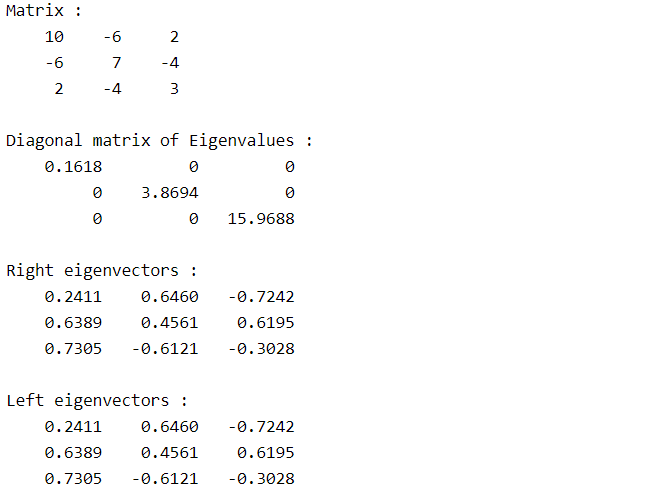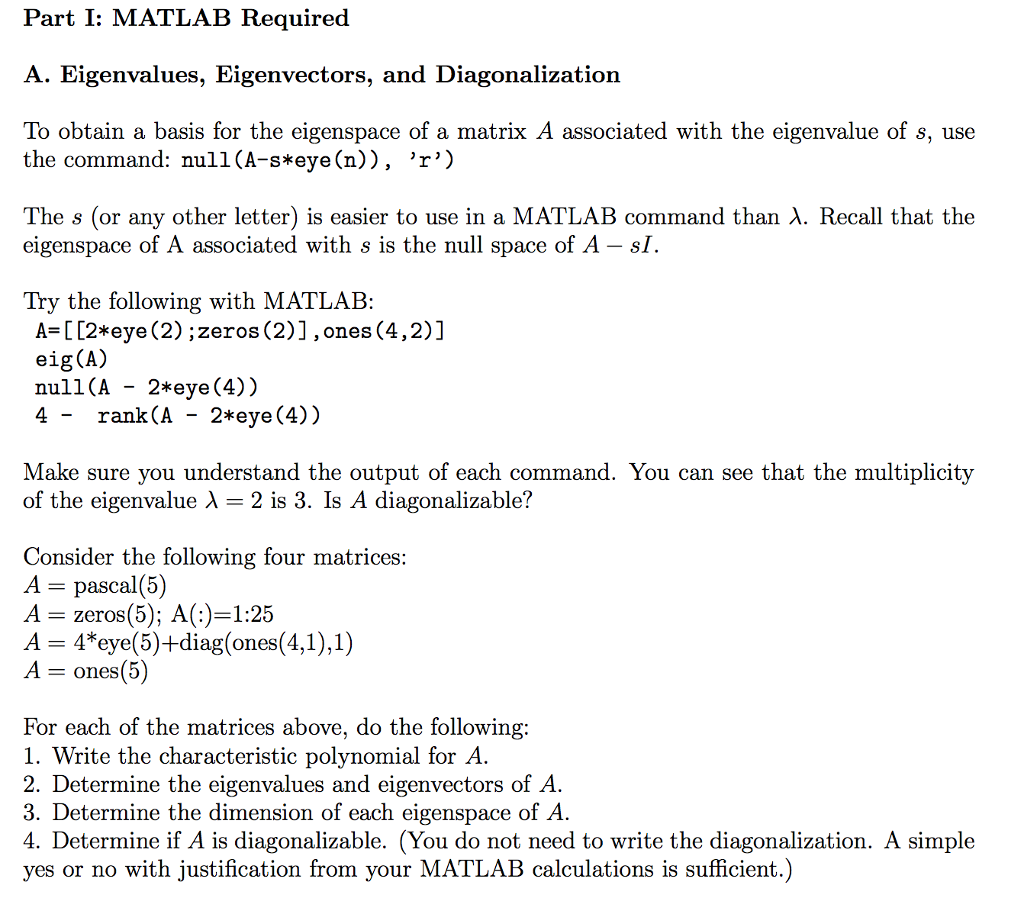

Even if a matrix is defective, the solution from eig satisfies A* X = X* D.Įxamples The matrix B = has elements on the order of roundoff error. If the eigenvectors are not independent then the original matrix is said to be defective.
FIND EIGENVECTORS FROM EIGENVALUES MATLAB FULL
However, if a matrix has repeated eigenvalues, it is not similar to a diagonal matrix unless it has a full (independent) set of eigenvectors. When a matrix has no repeated eigenvalues, the eigenvectors are always independent and the eigenvector matrix V diagonalizes the original matrix A if applied as a similarity transformation. If B is nonsingular, the problem could be solved by reducing it to a standard eigenvalue problem Because B can be singular, an alternative algorithm, called the QZ method, is necessary. The values of that satisfy the equation are the generalized eigenvalues and the corresponding values of x are the generalized right eigenvectors. The generalized eigenvalue problem is to determine the nontrivial solutions of the equation where both A and B are n-by- n matrices and is a scalar.

In MATLAB, the function eig solves for the eigenvalues, and optionally the eigenvectors x. The n values of that satisfy the equation are the eigenvalues, and the corresponding values of x are the right eigenvectors. Where A is an n-by- n matrix, x is a length n column vector, and is a scalar. Remarks The eigenvalue problem is to determine the nontrivial solutions of the equation: The eigenvectors are scaled so that the norm of each is 1.0. Produces a diagonal matrix D of generalized eigenvalues and a full matrix V whose columns are the corresponding eigenvectors so that A* V = B* V* D. Returns a vector containing the generalized eigenvalues, if A and B are square matrices. See the balance function for more details.

However, if a matrix contains small elements that are really due to roundoff error, balancing may scale them up to make them as significant as the other elements of the original matrix, leading to incorrect eigenvectors. Ordinarily, balancing improves the conditioning of the input matrix, enabling more accurate computation of the eigenvectors and eigenvalues. Use = eig(A') W = W' to compute the left eigenvectors, which satisfyįinds eigenvalues and eigenvectors without a preliminary balancing step. Matrix V is the modal matrix-its columns are the eigenvectors of A. Matrix D is the canonical form of A-a diagonal matrix with A's eigenvalues on the main diagonal. Produces matrices of eigenvalues ( D) and eigenvectors ( V) of matrix A, so that A* V = V* D. Returns a vector of the eigenvalues of matrix A. That the product vector \( of the eigenvalues and eigenvectors of the square matrix B.Eig (MATLAB Function Reference) MATLAB Function Reference It is important in many applications to determine whether there exist nonzero column vectors v such Such a linear transformation is usually referred to as the spectral representation of the operator A. Of course, one can use any Euclidean space not necessarily ℝ n or ℂ n.Īlthough a transformation v ↦ A v may move vectors in a variety of directions, it often happen that we are looking for such vectors on which action of A is just multiplication by a constant. Therefore, any square matrix with real entries (we deal only with real matrices) can be considered as a linear operator A : v ↦ w = A v, acting either in ℝ n or ℂ n. It does not matter whether v is real vector v ∈ ℝ n or complex v ∈ ℂ n. If A is a square \( n \times n \) matrix with real entries and v is an \( n \times 1 \)Ĭolumn vector, then the product w = A v is defined and is another \( n \times 1 \)Ĭolumn vector. The determination of the eigenvalues and eigenvectors of a system is extremely important in physics and engineering, where it arises in such common applications as stability analysis, the physics of rotating bodies, and small oscillations of vibrating systems, to name only a few. Eigenvalues (translated from German, this means proper values) are a special set of scalars associated with every square matrix that are sometimes also known as characteristic roots, characteristic values, or proper values.Įach eigenvalue is paired with a corresponding set of so-called eigenvectors.


 0 kommentar(er)
0 kommentar(er)
